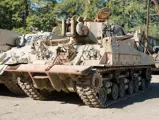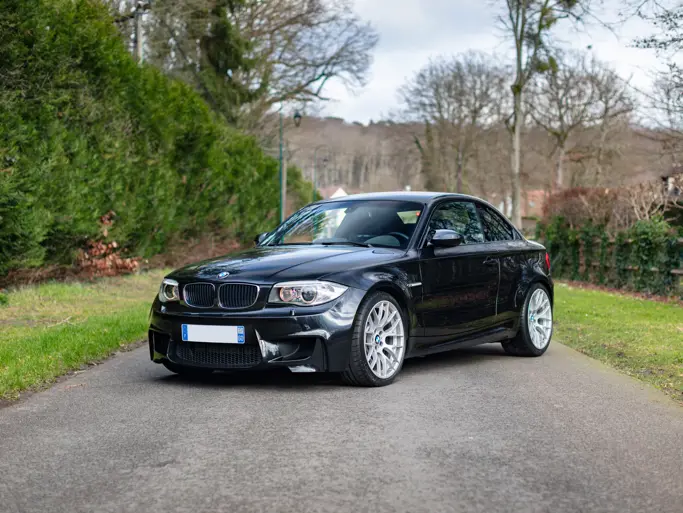The Littlefield Collection
M74 Armored Recovery Vehicle (ARV)
{{lr.item.text}}
$34,500 USD | Sold
 | Portola Valley, California
| Portola Valley, California
{{internetCurrentBid}}
{{internetTimeLeft}}

Weight: 46.8-tons (42,524-kg)
Length: 26' (7.95-m)
Width: 10' 1” (3.07-m)
Height: 11' 1” (3.37-m)
Crew: 4
Armor:
Hull front: .5” (13-mm)
Turret front: .5” (13-mm)
Weapons:
-Primary
1x .50-cal M2HB machine gun
-Secondary
1x .30-cal M1919A4 machine gun
-Ammunition
352x 40-mm
420x .45-cal
430x .30-cal carbine
Engine: Ford GAA V-8, 450-hp
Power/weight: 9.6-hp/ton
Fuel Capacity: 168-USG (635-l)
Range: 100-miles (160-km)
Speed: 21-mph (34-km/h)
The vehicle being offered, M74 Armored Recovery Vehicle (ARV), serial number 57895, was probably built by Bowden-McLauglin-York (BMY) between 1954 and 1955. It is unrestored and in original condition. It was last used by the West German Army and was part of the Budge Collection. It is still in its original German Army paint. The exterior needs to be cosmetically restored. The vehicle runs and drives well on an auxiliary fuel tank. The roadwheels, tracks and suspension components are good. All driver's controls and instruments are present and functioning. The interior needs cosmetic restoration.
Due to the increase in size of American tanks seen in the early 1950s such as the M26 Pershing and M46/47 Patton series, the U.S. military required a more powerful ARV than the Sherman based M32 series of ARV's. BMY developed a heavy-duty ARV using surplus M4A3 chassis. Designated the M74, the first vehicle was converted in July 1953 with full-scale production starting in February 1954. The conversion work continued until October 1955.
The M74 was built with a recovery winch that had a 90,000-lbs capacity, which was a 30,000-lb increase over the M32. It also added separate tow and lifting winches. To aid in recovery work, a bulldozer blade was added to the front of the hull. It could be lowered to act as an anchor during heavier recovery operations and could also be used as a light bulldozer. Unlike the M32, which used a windlass arrangement to raise and lower the A-frame, the M74's A-frame was hydraulically-operated. Integral stowage bins were added to the hull sides, which greatly increased stowage capacity and accessibility.
The M74 remained in U.S. service until the early 1960s when it was replaced by the M88 series of ARV’s, which were built using M48 Patton tank components.
Transport Cost to Storage: $5,016





